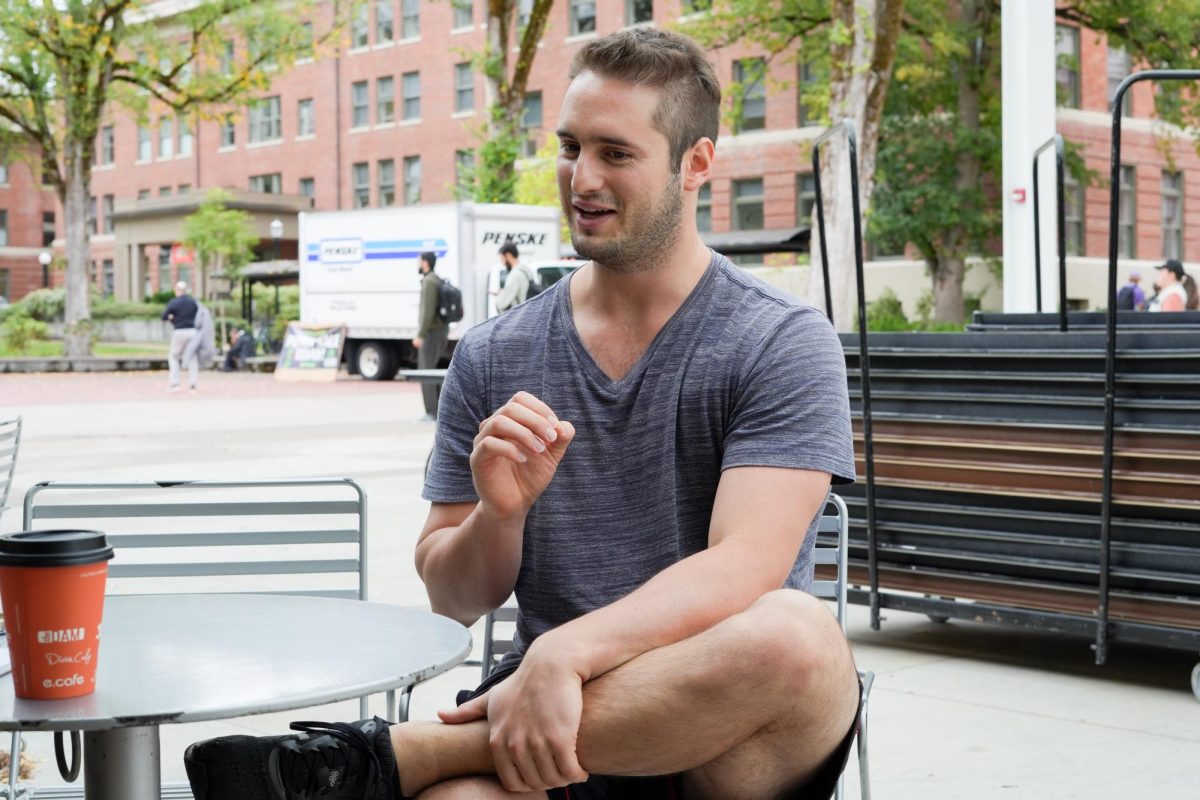Oregon State University students and faculty are currently working with Daimler Truck North America on the SuperTruck 3, which aims to create a zero-emission, hydrogen based truck using AI.
The project was announced in January, and designs of the project are set to be revealed in 2027. This will be Daimler’s third SuperTruck project.
The goal of this project is to create a “proof-of-concept truck”, said Devin Crowley, an artificial intelligence and robotics Ph.D. student at OSU who is funded by Daimler, and who has worked on the SuperTruck 3 project. The truck itself will not be mass produced, but technologies from the truck could be used in future ones.
Trucks are guided by a controller that decides how much power to distribute to the truck when going up or down a hill, taking curves, or speeding up and slowing down. Previous controllers have been manually written by a person.
“Because it’s hand tuned essentially, it’s not going to be fully optimal, and it’s also a lot more work to design it,” Crowley said about the controller he was trying to improve. “The approach that I am putting forth is a learned controller to do that same logic, but learned.”
Crowley lists that a downside to the old controller is that it is not very efficient, and it takes more time for the controller to look up what to do in a certain situation. There are “look up tables” for the controller to refer to, but Crowley’s design would take less time and be less work for an actual person.
Using AI, Crowley is also trying to make the controller have the ability to learn its route before it starts driving so that it can prepare for the maneuvers it would need to make. These controllers would also be cheaper and more optimal than the engineered ones.
Alan Fern, a professor in the OSU College of Engineering, also helped work on the project, and he described the idea of a learned controller as “Reinforcement Learning”.
“Basically, we train a controller to turn the knobs in a simulation of a fuel-cell truck in order to optimize a performance measure of interest (e.g. efficiency),” Fern said in an email. “After many thousands or even millions of simulation trials used for learning, the optimized controller can then be tested in the real world.”
The hydrogen-based fuel cell is a technology that relies on hydrogen when batteries or other renewable energy sources do not accomplish the task by themselves.
The battery also has regenerative braking, which means that when the truck is traveling downhill, it regenerates power, which makes it last longer before needing the help of the hydrogen-based fuel cell.
The hydrogen-based fuel cell and renewable battery will work together in the truck to meet the terrain and road conditions on which the truck will drive. This makes the truck more efficient than previous ones.
“As hydrogen production technology improves, it could be a great way to allow for a robust energy grid that is largely driven by renewables,” Fern said. “But hydrogen is produced as the backup when renewables are not sufficient.”
According to Fern, since this project’s purpose is to develop a proof of concept truck, the AI technology may or may not be used in the future depending on the results of the project.


















































































































